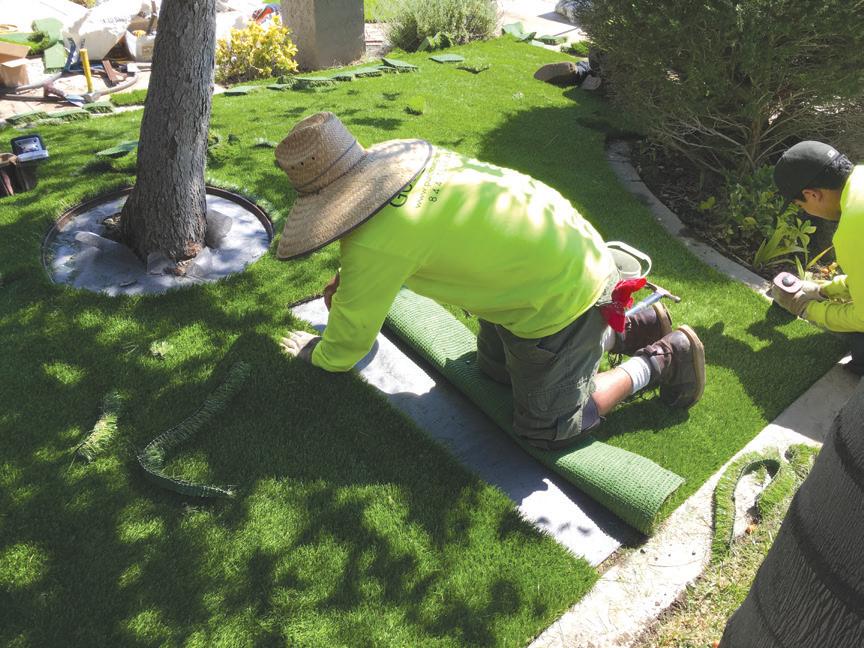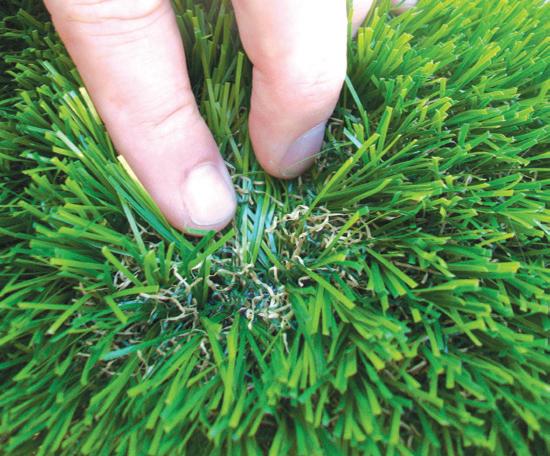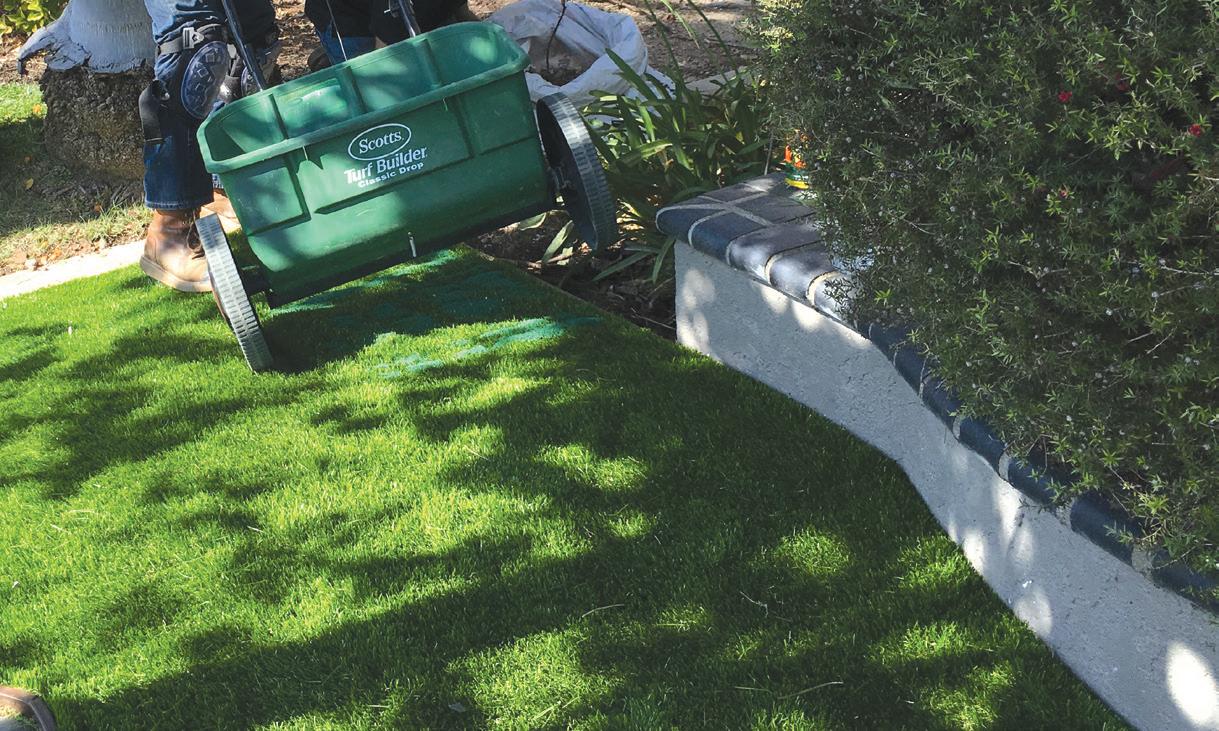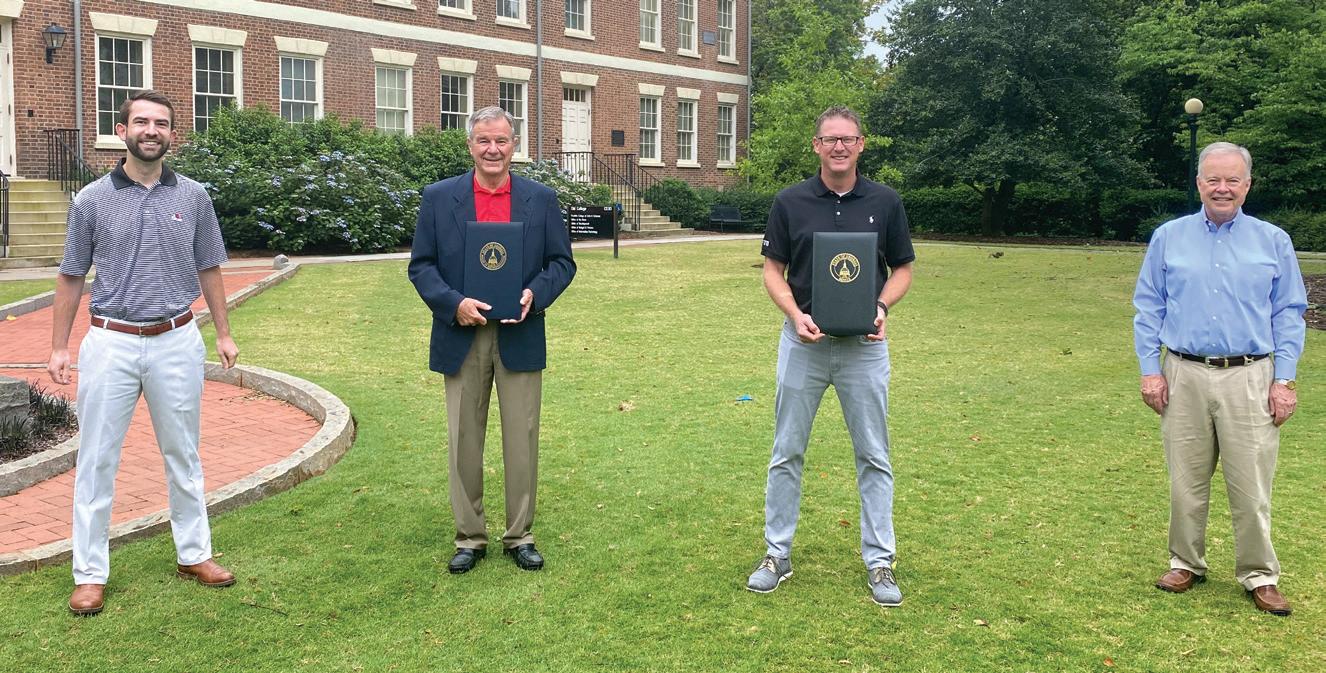
5 minute read
Synthetic turf for landscapes Innovations create upward trend
Synthetic turf for landscapes
Innovations create upward trend
by Mike Dahl, managing editor, Landscape Architect and Specifiers News
Synthetic turf installations are on an upward trend for landscape
projects, according to Laith Ross, PE, LEED AP, the new chairman of the Synthetic Turf Council (STC).
“Overall, for designers and installers across the nation, you are seeing a pretty significant growth in landscape installations,” he states. “This is primarily in water restricted areas and areas that have trouble maintaining natural grass.”
California, Arizona and Nevada are high on that list.
Chad Vander Veen, Purchase Green For landscape contractors who want to take better advantage of the growing use of synthetic turf in landscape installations, the Synthetic Turf Council is now offering a certification program. Known as CTI-L, it provides education to help learn best practices and become a more qualified installer. The STC says that they are now seeing bids that specify CTI-L certification.
Ross is senior principal with RossTarrant Architects in Lexington, Kentucky. With 29 years of personal experience designing landscapes with both natural grass and synthetic turfs, he can confidently say, “They both have their place.”
Based in Forest Hill, Maryland, the STC has 265 members from across the supply chain in the synthetic turf industry including installers.
New installer certification program
Recently launched, the CTI-L program requires an education component, an experience requirement regarding the square footage of landscape turf installed and an exam to become certified as a landscape installer. Then there are a certain number of hours of continuing education to recertify every two years.
“We provide an opportunity to recognize best practices in the industry,” relates Dan Bond, the president and CEO of the Synthetic Turf Council “And we are now seeing bids that specify CTI-L certification.” Ross agrees. “Because of performance concerns and issues with installations we have seen in the past, more and more designers are starting to see the benefit in the actual certification process to ensure that they are getting a good installation. A poor installation can ruin a synthetic turf project faster than anything else can.”
New innovations
According to Ross, technology for synthetic turf is constantly evolving with better fiber and infill materials to make "synthetic turf perform as well as the best grown natural grass under the best conditions.”
And as far as infill material is concerned, the introduction of new products has compelled his firm to update infill designing guidelines to incorporate those changes. The spectrum of available choices includes organic-based materials such as coconut, cork, wood fiber, walnut shells and hemp-based products.
“We even have a member that is looking into using old coffee beans and grinding them down as infill,” Bond states. And Ross says that based on what he is seeing in the design market, the use of organics is growing. The STC is soon coming out with an industry survey that will better quantify the types of infill that are being installed.
The elephant in the room
What about the highly publicized cancer danger of using recycled rubber?
“We’ve compiled a list of 110 third party, peerreviewed studies and reports that show that there is no increased risk for children of any age, or adults that play on synthetic turf with recycled rubber infill,” retorts Bond. “The EPA has taken a multi-year study that looks at rubber as infill for synthetic turf athletic fields and their first report says that there is no cause for alarm when it comes to crum rubber infill turf fields.”
And he reminds that, “The end user can choose whatever infill they want.” All interested parties can go to SyntheticTurfCouncil.org and download an Excel spreadsheet with all of the studies.
Closing thoughts
Ross says that the goal of the STC is to make synthetic turf perform better and alleviate safety fears by testing and showing those test results, “putting it all out there on the table so that everyone can see it.”
And if dangers and concerns arise from their testing, “you would see an immediate change of course on how we approach these things.”
To better inform contractors, the STC has technical guidelines on their website, which can be downloaded as PDFs. Also, they are in the process of updating the majority of those and will continue to do so about every two years, according to Bond, and they plan to present more webinars.
Ross reminds that with natural grass and synthetic turf, “They each have their uses. They each have a place that is best for them individually.”
This article first appeared in Landscape Contractor Magazine in the April 2020 issue. For more, visit landscapearchitect.com

Alli Rael, LASN Most of the synthetic turf manufacturers have a standard system that they market, which often will consist of a certain turf type and specific height, with an infill that is a certain blend of materials. Some manufacturers will use two or three different systems with two or three different infill materials in them.

Chad Vander Veen, Purchase Green There have been many technological advancements when it comes to infill materials and contractors have a wide range of choices, including organic material, that can be provided as part of a synthetic turf system according to Dan Bond, the president and CEO of the Synthetic Turf Council.

Chad Vander Veen, Purchase Green As far as choosing a proper infill material, Laith Ross, PE, LEED AP, a senior principal with RossTarrant Architects and the chairman of the STC advises that some infills have to have moisture content in them to perform their best and in some areas of the country, that may not be realistic. In other areas freeze/thaw may cause a breakdown or degradation of the infill material because if it needs moisture, when it freezes, the moisture can expand and break down the material. Another consideration is what’s available in your area.










